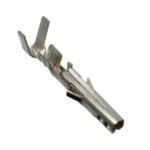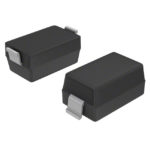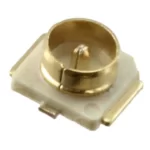A Comprehensive Guide to Understanding Integrated Circuits
Introduction to Integrated Circuits
Integrated circuits (ICs) are an essential component of modern technology, and they have revolutionized the electronics industry. They are used in almost every electronic device, from smartphones to computers, and even cars. In this comprehensive guide, I will explore what integrated circuits are, their history, types, advantages, how they work, applications, manufacturing process, common components, and their future.
What Are Integrated Circuits?
Integrated circuits, also known as microchips or simply ICs, are miniaturized electronic circuits that are made up of many electronic components such as resistors, transistors, diodes, and capacitors. These components are combined onto a single silicon chip, which is then packaged into a small form factor that can be easily integrated into electronic devices. ICs are the building blocks of modern electronics, and they have made it possible to create complex electronic systems that are small, lightweight, and require low power.
A Brief History of Integrated Circuits
The first integrated circuit was invented in 1958 by Jack Kilby of Texas Instruments and Robert Noyce of Fairchild Semiconductor. Kilby and Noyce independently developed the concept of integrating multiple electronic components onto a single silicon chip. The first ICs were relatively simple and had only a few transistors, but over time, their complexity increased, and they became smaller and more powerful.
Types of Integrated Circuits
There are several types of integrated circuits, including analog, digital, and mixed-signal ICs. Analog ICs are designed to process analog signals, such as sound or radio waves. Digital ICs, on the other hand, are designed to process digital signals, such as binary data. Mixed-signal ICs combine analog and digital circuits on a single chip.
Advantages of Using Integrated Circuits
The use of integrated circuits has several advantages over traditional electronic circuits. ICs are smaller, more reliable, consume less power, and are more cost-effective than traditional circuits. They also allow for faster processing speeds and can be easily integrated into complex electronic systems.
How Integrated Circuits Work
Integrated circuits are made up of many electronic components, such as resistors, transistors, and capacitors, that are combined on a single silicon chip. These components are interconnected by metal wires, which are deposited on the surface of the chip during the manufacturing process. When an electrical signal is applied to the chip, it flows through the various components, and the circuit performs its intended function.
Applications of Integrated Circuits
Integrated circuits are used in a wide range of electronic devices, such as smartphones, computers, televisions, and cars. They are also used in medical devices, military equipment, and aerospace applications. ICs are essential to the functioning of these devices, and without them, many of the technological advancements we take for granted would not be possible.
Integrated Circuit Manufacturing Process
The manufacturing process for integrated circuits is complex and involves several steps. The process begins with the creation of the silicon wafer, which is then coated with a layer of silicon dioxide. The circuit pattern is then etched onto the silicon dioxide layer using a process called photolithography. The silicon wafer is then exposed to various chemicals and gases, which create the necessary electronic components, such as transistors, on the surface of the wafer. The wafer is then cut into individual chips, which are packaged into their final form factor.
Common Integrated Circuit Components
Some of the common components found in integrated circuits include transistors, capacitors, resistors, and diodes. Transistors are used to amplify or switch electronic signals, while capacitors store electrical energy. Resistors are used to limit the flow of electrical current, while diodes allow current to flow in only one direction.
Future of Integrated Circuits
The future of integrated circuits is bright, and experts predict that they will continue to play a critical role in the development of new technologies. As the demand for smaller, faster, and more efficient electronic devices increases, the importance of integrated circuits will only grow. In the future, we can expect to see even more complex and powerful ICs that will enable the creation of new and innovative electronic systems.
Conclusion
Integrated circuits are an essential component of modern technology, and they have revolutionized the electronics industry. They are used in almost every electronic device, from smartphones to computers, and even cars. In this comprehensive guide, we explored what integrated circuits are, their history, types, advantages, how they work, applications, manufacturing process, common components, and their future. As technology continues to advance, integrated circuits will remain a critical component in the development of new and innovative electronic systems.


